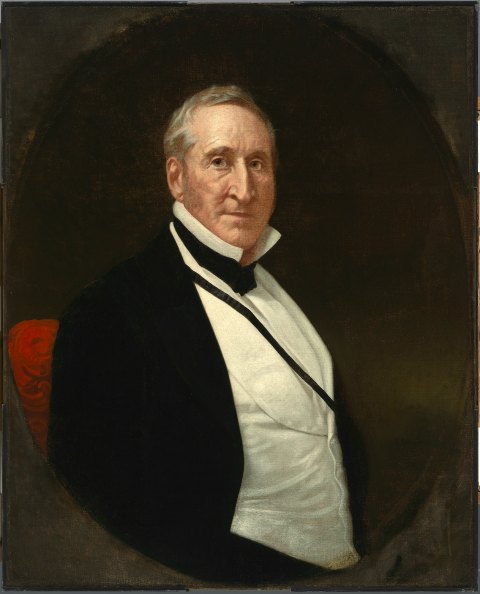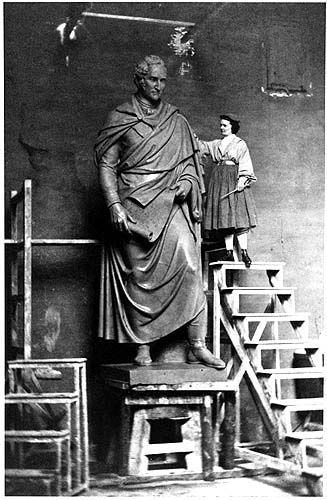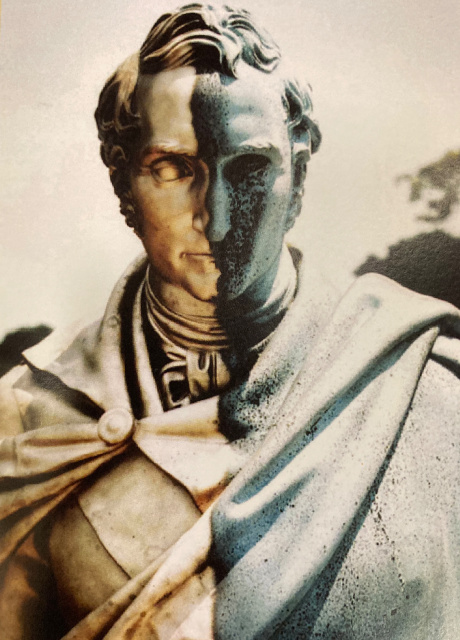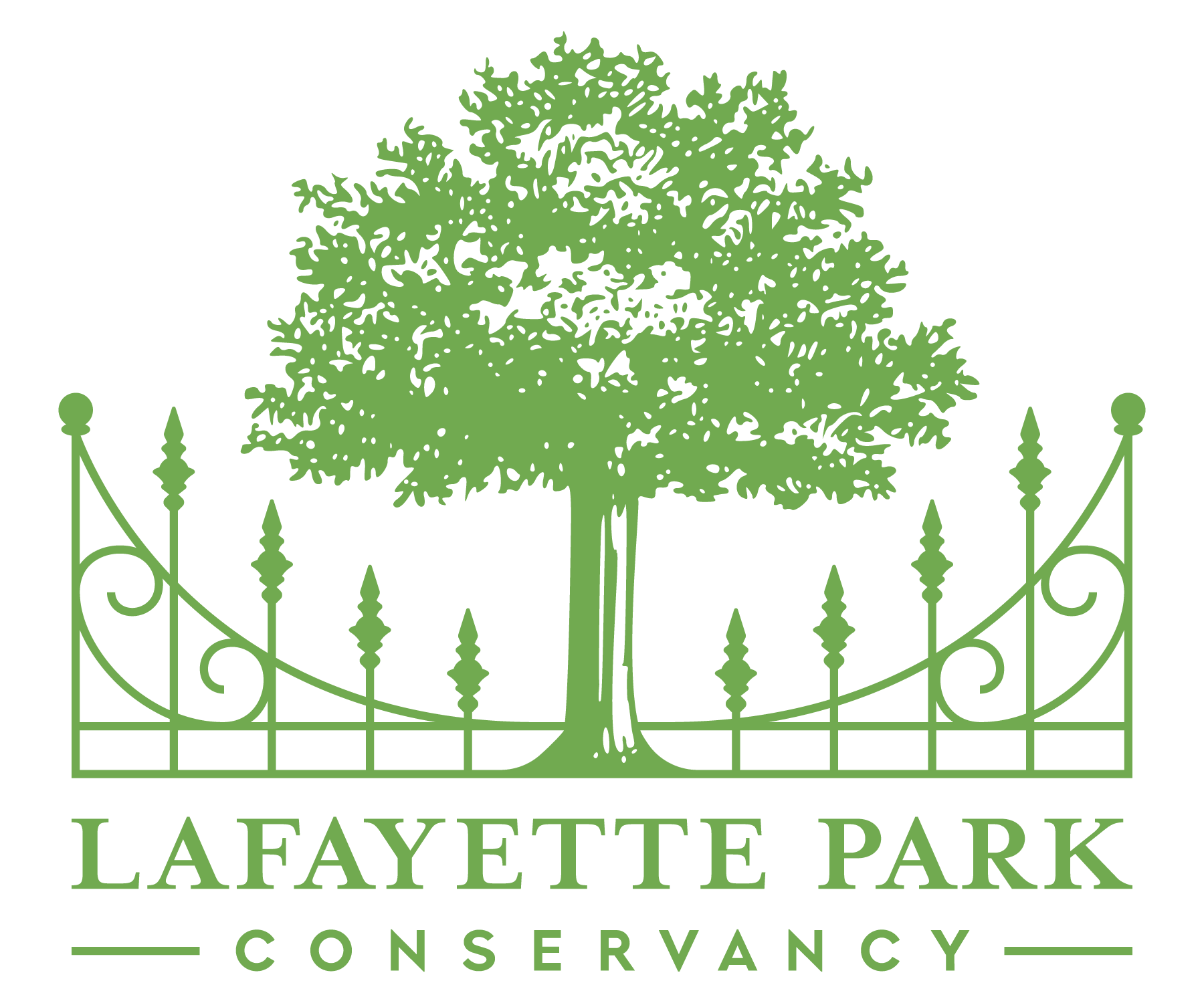SENATOR THOMAS HART BENTON

Benton, a lawyer, soldier, statesman and duelist was considered the most famous Missourian at the time of his death in 1858..
He practiced law in Tennessee, and served in the War of 1812 as a colonel of volunteers under General Andrew Jackson. Moving to St. Louis in 1815, he started a prosperous law practice and was editor of the Missouri Enquirer newspaper. Benton was one of Missouri’s original two US Senators, first elected in 1821.
Benton remained a Senator for 30 years, championing hard currency, westward exploration and national expansion. He wanted a cross-continent trade route that extended from San Francisco to New York, passing through St. Louis, the most important western city at the time.
In 1850, he lost his congressional seat, as his antislavery stand during the Compromise of 1850 displeased southern interests in the Missouri Legislature. He died April 10,1858. Two years later, the Missouri State Legislature commissioned a monument to the late Senator. $2,500 was appropriated for a monument to be erected in Bellefontaine Cemetery where Benton was buried.
Two prominent St. Louisans oversaw the project; Colonel Joshua B. Brant and Colonel Robert Campbell. Brant was married to Benton’s niece. Since the act appropriating money for the monument did not specify the type of monument to be erected, Brant and Campbell appointed a committee to decide. The committee included Brant, Moses L. Linton and Wayman T. Crow.
The commissioners determined that the monument should be a bronze statue of Benton in a public space instead of a monument at his grave site. Their decision to erect the statue in a public park exceeded the intent of the legislature both in scope and cost. The eventual cost was $36,000. The commissioners for the statue and the Board of Improvement for Lafayette Park raised the additional $33,500.
The commission for the statue was awarded to Harriet Goodhue Hosmer, a friend of Commissioner Crow and of his daughter Cornelia.
Cornelia Crow and Hosmer were classmates at school and Hosmer had visited the Crow family in St. Louis. Impressed with Harriet’s ambition and personality, Wayman Crow became a lifelong patron of the young artist. Several examples of her work were in St. Louis and the commissioners endorsed her for the new project.

Harriet Hosmer was about 30 years old and living in Rome when she received the commission. She sculpted the statue in Rome in 1861. It was then cast by the Royal Bronze Foundry in Munich in 1864.
The resulting statue is a colossal standing figure of Senator Benton. It stands ten feet tall and is two feet, ten inches wide and deep.
Benton wears a classical toga over a contemporary jacket and neck scarf. He is wearing sandals, faces west and holds a partially unrolled scroll of a map with the word “America” on it.
The 10 foot tall pedestal is of Quincy granite. A Benton quote from a 1849 railroad meeting in St. Louis is on the front: “There is the East, there is India.” That is, the United States could only dominate trade in the Far East by creating a path west to the Pacific Ocean. On the back is the name “Benton”. A square platform of Quincy limestone blocks surrounds the pedestal.
The public dedication ceremony for the statue on May 27, 1868 attracted a crowd of some 30,000 people. Benton’s statue was the first public sculpture erected in Missouri and the first large-scale outdoor bronze to reside west of the Mississippi River. An article about the dedication appeared in Harper’s Weekly.
There are two inscriptions on the base of the sculpture: “Harriet Hosmer Sculpt Rome MDCCCLXI” and “Ferd. v. Miller Fnd Munchen 1864”. Miller was in charge of the Munich foundry where the bronze colossus was cast.
The monument is on an elevated area approximately in the center of the park, northwest of the lake.
CONDITION OF THE MONUMENT TODAY

Several problems with the Benton statue led to a Lafayette Park Conservancy (LPC) restoration project:
(At left: composite after/before image by Phoebe Dent Weil)
(1) The surface was worn and pitted. Ms. Phoebe Weil and the Center for Archeometry at Washington University cleaned the statue in 1979 and applied a coating. There had been no maintenance on the statue since that time.
(2) Corrosion developed in the metal of folds at the bottom of Benton’s greatcoat. This appeared to be caused by recent blockage of the vent holes left from the casting process. The blockage trapped moisture in this area.
(3) The top section of granite on which the statue stands experienced some deterioration. Small parts of the granite crumbled away.
(4) Outer blocks of the limestone platform surrounding the pedestal began to move. Attempts to seal gaps between the blocks with flexible caulk were not successful.
The LPC selected the firm of Russell-Marti to conserve the bronze. Careful cleaning, removal of corrosion and unclogging of the vents revealed that the bronze was in good condition. Happily, the appearance was worse than the diagnosis. The original gold patina applied at the foundry in Munich had worn away. Ms. Weil’s group had carefully reapplied the gilt to the statue, but it too eventually wore away. Russell-Marti restored the gold patina once again. It also received a protective coating and, when the statue was unveiled after the Russell-Mari conservation, Benton appeared as he did at the time of its dedication.
A fund has been established for the regular maintenance of the Benton and the nearby Washington statue . A regular maintenance schedule exists for both statues. We appreciate your kind consideration of a donation to the Conservancy, specifically toward statue maintenance.
As funds become available, the limestone blocks will be reset to close gaps between the blocks. The stone urns shown in early photographs of the monument will also be recreated.

